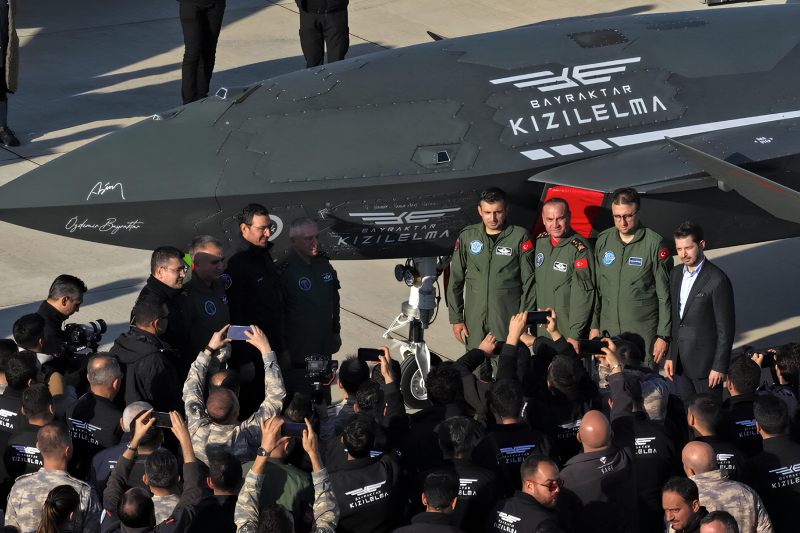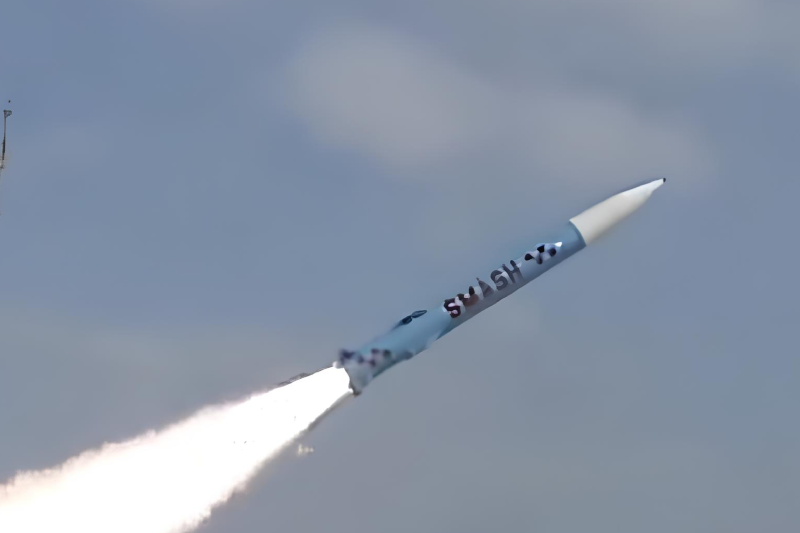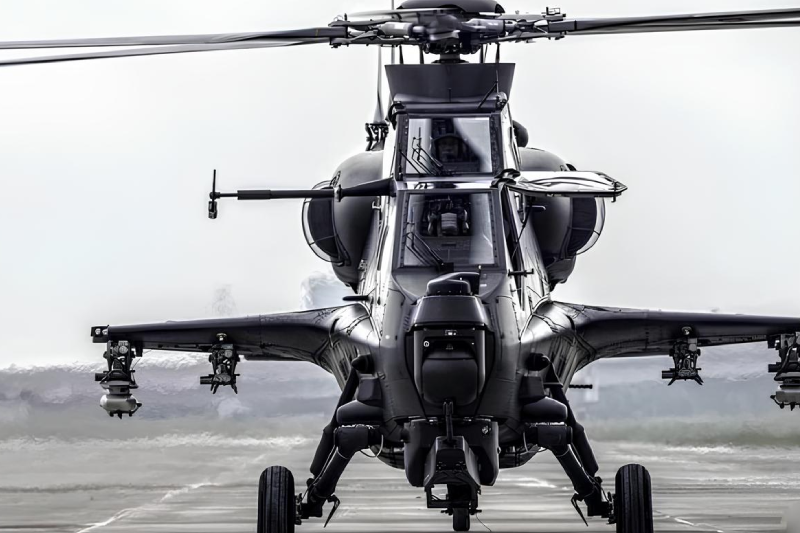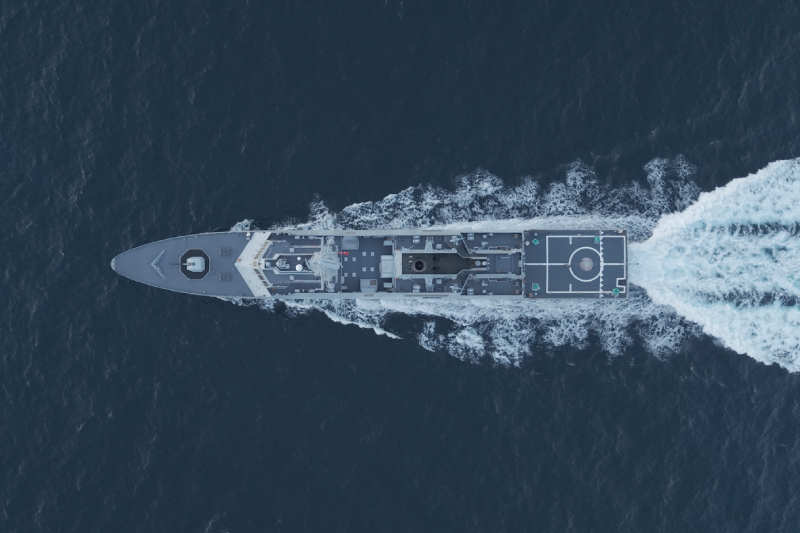Why Air Defense system do not ensure complete protection?
Modern warfare is not set right on the battle field or the foot of a solider but rather in the depth of the skies. An effective air defense system distinguishes between survival and difference because effectively controlling the skies do not ensure key survivability. Since WW2 states have invested billions in air defense systems to protect their counter-value and counter-force targets from any aerial threats. But despite the increasing sophistication of air defense systems they do not guarantee complete safety, evolving missile technology, cyber warfare, un predictable strategies, and the complexity of modern warfare makes it impossible to create an impenetrable front.
Air defense systems basically are designed to protect a state’s territory, areas of interest and safeguarding joint forces, enabling freedom of action by neutralizing enemy’s air, missile or even land capabilities. An air defense system is not just one composite thing but rather an integration of various assets that have various purposes making it a system of systems that allow for detection, interception and engaging of threats that togeather make up an air defense systems. While air defense systems are vital they single handedly cannot ensure complete protection due technological, strategic and operational limitations. Following would be a detailed analysis of how air defense systems essentially work and how they lack an impenetrable defense in an increasingly sophisticated strategic environment.
Understanding Air defense systems
AD systems are vital for securing a country’s national security. These systems are basically a complex network that works by the integration of various components like satellites, ground or airborne radars, surface to air missiles (SAM) sites, and fighter planes to detect, intercept and engage and nullify airborne threats. Fighter planes for instance are the physical manifestations and show case assets of air defense performing air sovernighty alert missions while also providing unique capability of visual identification which classifies a particular threat before diving in for an attack.
The SAM systems on the other hand are both ground based and sea based systems designed to counter any aerial threats. But maintenance of these systems is quite costly as it requires continuous investment and re-modification to sustain the ever changing capabilities of missile like the hypersonic glide vehicals that can travel at speeds greater than mac 5 at lower altitudes thus their range, response and effictiveness should always be top notch. These are primarily AD system’s engagement assets. Prior to these are the detection and surveillance sensors, AD system utilizes a network of sensors for early threat detection like Satellites, ground-based radars, aerial radars, airborne early warning and control systems and ship-borne radars. Beyond physical assets come the under-lying network of systems that make the success of the physical assets possible.
These are called as the command, control, communication, computers, intelligence, surveillance and reconnaissance systems. C4ISR systems are the under-current that make mission accomplishment possible. They do this by coordinating collaborative planning and the synchronizing integrated forces and operations. Command and control (C2) systems involves the control and exercise of authority by the designated counter-force head. These systems primarily include personnel, equipment, facilities, communication, facilities and procedure used by the military for strategizing, coordinating and executing the operations. Given the complexity and high cost of AD systems, their effectiveness must be constantly evaluated evaluated and revised to adapt to new technologies, threats, and budgetary constraints.
Types of Air defense
1. Short range air defense system:
Short range air defense is a military system that is designed to detect, track and intercept hostile airborne threats that are situated at short ranges and lowaltitudes such as fighter aircraft, drones or unscrewed aerial systems (UAS). These systems are vital and act as immediate forefronts in protecting ground forces, command centers, naval ports and airfields against ‘low, slow and small’ (LSS) drones Globally, several states have deployed this type of AD system.
- United States: The U.S. Army’s M-SHORAD on Stryker vehicles combines Stinger missiles, 30 mm cannons, and radars for mobile defense.
- Russia: The Pantsir-S1 integrates radar, electro-optical sensors, missiles, and antiaircraft guns to defend against aircraft, cruise missiles, and drones.
- Israel: The Iron Dome is often cited as a hybrid short-range defense system that detects and intercepts rockets and drones at low altitude.
2. Medium range air defense system:
They typically range between 20-50km, and defend large military bases and counter-value targets like cities as well as troop formation enemy aircraft, drones and some cruise missiles. They create a layered defense by sitting right between short-range and large-range missiles. Like
- NASAMS (Norway/USA): Uses AMRAAM missiles; protects cities like Washington D.C. and Ukraine’s urban areas.
- Buk-M2 (Russia): Mobile radar-guided SAM; targets aircraft, helicopters, and cruise missiles.
- Sky Sabre (UK): Networked system linking radars and CAMM missiles for area defense
3. Long-range air defense system:
These provide more than 100 km coverage, defending entire geographical regions and countries. Therefore they can intercept high-end aerial technologies such as high-speed jets, cruise missiles and ballistic missile. For instance
- S-400 (Russia): 400 km range; protects against stealth aircraft and ballistic missiles.
- Patriot PAC-3 (USA): Widely deployed; intercepts aircraft and short-range ballistic missiles.
- HQ-9 (China): Comparable to Patriot/S-300, used for strategic area defense
4. Anti-missile defense systems:
These systems are specifically designed to detect and intercept ballistic or cruise missiles, often work and are integrated along with MRAD/LRAD to form a multi layered protection. These system attack missiles that are in there mid-course or terminal phases. Following are the most famous of these
- THAAD (USA): Intercepts ballistic missiles in the terminal phase; deployed in South Korea and the Middle East.
- Aegis BMD (USA/Navy): Ship-based radar and interceptors; protects fleets and coastal areas.
- David’s Sling (Israel): Defends against medium- and long-range rockets/missiles.
5. Anti-aircraft systems (short/medium ranges):
These focus specifically on air-breathing targets such as planes, helicopters and drones often in lower altitudes. A lot of these systems combine guns and short-range missiles for close-in defense. For instance
- Pantsir-S1 (Russia): Combines twin cannons and missiles; good for intercepting drones and low-flying aircraft.
- Avenger (USA): Humvee-mounted Stinger missiles for mobile troop defense.
- Crotale NG (France): Short-range missile system to counter aircraft and UAVs
Limitations of Air Defense system
While air defense system has it’s own advantages it also come with varying forms of disadvantages with it mostly arisen by increasingly evolving military technology that might exploit the loopholes in current AD system.
Cheaper Drone-warfare and saturation attacks
One of the most depth full strategic lessons coming from the 21st century especially from the middle east is that offense is cheaper than defense. Making drones and easy flying missiles is way cheaper as compared making high end defense systems. Modern air defense system like Pantsir (short-range), Buk-M1 (medium-range) and S-300 and S-400 are extremely costly to buy and operate. For instance the Turkish which probably would have been worth a fraction of the Russian Pantsir system managed to destroy them in lybia and Syria.
Moreover, slow moving and low altitude flying drones are often times hard to track and detect and therefore intercept by AD system mostly because they can easily hide behind things like building or mountains and have smaller radar cross sections. For instance, Turkish Bayraktar TB2 drones destroyed Pantsir and Buk systems by exploiting gaps in radar coverage or when they were on standby or being moved.
Another important loopholes in AD defense system is that it gets easily over whelmed when saturated by excessive amount of missiles or drones meaning it can only engage with a limited number at a time. A very noticeable example of this is the Hamas attack on Israel on October 7 2023 when it launched hundreds of cheap built rockets towards Israel that in turn over whelmed it’s Iron dome system and ended up with successful destruction. Another example is Israel and Turkey used tactics like electronic warfare (jamming) combined with multiple drones and missiles to confuse and overwhelm Russian-built systems. Even if the defense shoots down some drones, enough may slip through to destroy the defense itself.
The efficiency of high-end technology and the inefficiency of AD systems
The efficiency of modern technologies are amplified further when they are on the offensive side because they can evolve against a particular defensive technology in a far faster pace. In this regard technologies like unmanned aircraft systems (UAS) pose a significant challenge to air defense system because of their evolving capabilities and versatile applications. Their technical and tactical usages make them more critical to air defense system as even commercially available drones be weaponized.
Therefore unlike traditional manned aircraft, UAS can be used by widespread actors like small states and non-states making threat more ubiquitous. Another threats is that small UAVs can be assembled quickly from commercial parts and can attack from a very close quarters this reduces the warning time for AD systems or traditional control system to react. They are also exploited as decoys to saturate air defenses and can be used as kamikaze drones for direct attacks.
Hypersonic weapons travel above Mach 5 while also remaining highly agile and unpredictable in flight. Unlike ballistic missiles that follow fix paths hypersonic change courses mid-flight and fly at lower altitudes which come below the radar coverage which makes detection and tracking difficult. More over space based monitoring becomes complicated through weaker infrared signatures while there speed reduces reaction time to drastic levels.
As a result, traditional systems like Patriot or THAAD struggle against them, causing militaries to develop advanced radars, space-based sensors, and new interceptors such as the Glide Phase Interceptor. Overall, hyper-sonics undermine the reliability of existing missile defense, forcing a major rethink in deterrence and protection strategies.
Cyberattacks exploit AD system by targeting computer nodes and networks and communication links they depend on. Hackers can easily disrupt radar signals, or considerably shut down and stall command and control centers. This makes even advanced system vulnerable by neutralizing defenses without actual combative attacking which can pave way for missile or drones to strike effectively.
Human and tactical limitations
Air defense systems are only affective if the manpower behind it is as robust as the mechanics of the system they are handling. Even the most advanced AD technologies like russia’s Pantsir’s SHORAD or S-300 and 400s can fail if operator behind them lack proper training under operational stress. The tragic downing of Ukranian passenger plane by the Iranian Tor system shows how human error can lead to catastrophy. Tactical limitation as reflected in 2020 Libyan Civil War showed Turkish-supplied Bayaktar TB2 drones destroyed several Russian Pantsir-S1 SHORAD systems used by the LNA, showed how tactical limitation in this case saturation drawback of expensive AD system succumbed to Turkish coordinated drone and missile strikes.
Broader security threats beyond air domain
Despite how effective a good air defense system is. It’s strategic blueprint does not ensure complete evacuation of all the insurgencies a particular military strategy or doctrine might face. A lot of time certain belligerencies are designed to be combative against other military domains such as naval or ground attack. Thus an AD system does not ensure a well-rounded protection in such scenarios although it might be used as a cross-domain asset.
Hybrid Warfare: Cyber-attacks, Sabotage, Psychological Warfare
Hybrid warfare is a mixture of psychological, digital and physical tactics in an attack strategy. These wide array of tactics or not something air defenses are built to handle. Moreover, strategically significant military centers such as command and control centers or critical airport infrastructure, or military aircrafts can easily be disabled or disrupted. These cannot be defended by AD system or even sometimes defenses in general. Meanwhile psychological interventions such as spreading false propaganda or fear are completely out of the control of traditional defenses let alone air defenses.
Ground or sea based attacks
Missile defenses focus more on aerial and missile attacks, they are of equipped to control or intercept sea or land threats. Moreover defenses most certainly can be overwhelmed by saturation attacks rendering even expensive interceptors like THAAD or Patriot obsolete. Moreover defenses have logistical limitations as well for instance once an interceptor has intercepted something, system requite time to reload sometimes hours or even days depending upon the geographical body. These large gaps then can be exploited.
Complementary measures needed
Air defense systems alone are not enough, so countries need additional layers of protection in other areas. Here’s what each of those points means in detail:
1. Intelligence and Early Warning
This refer to having string and robust systems that can proactively detect threats before they even arrive. Satellites, drones, radar and surveillance networks are built to spot enemy aircraft or missiles launches early. Therefore if detection of a missile launch can be done in time, air defense units and civilians can be proactively alerted making it more likely to interception and minimizing damage. Without proper ISR (Intelligence, Surveillance, Reconssiance), even the best defenses can be compromised.
2. Active Offensive Deterrence
This is the idea that relies on strategy of first strike or just having credible retaliation. In this scenario a state to destroy another state’s ambition of launching a massive missile attack will preemptively destroy it’s launch site or would threaten to do so through threats of credible retaliation, these threats therefore would be part of it’s active offensive or first-strike deterrence. This would then deter the enemy through denial where even an offensive thought process would be discouraged through retaliation. This means that air defense is a physical asset that wouldn’t necessarily discourage the enemy, but deterrence being a psychological asset most likely would.
3. Civil Defense
In the age of digital technology war is only fought in battlefields enemy’s are compromised through things like better preparation and mind set control of the population as well in way that they are prepared when their country becomes part of active belligerency as well. Therefore civil defense is vital, preparing population and infrastructure for emergencies: evacuation plans, teaching war preparations to civilians and protecting critical infrastructure such as (power plants and hospitals). Israel, for instance combines iron dome with well-organized shelters and warning systems.
4. Diplomacy and Alliances
Security is not only about military technology but also about politics and partnerships just as much. Diplomatic agreements (like arms control treaties) can reduce the risk of attacks in the first place. Alliances (like NATO) mean that if one country is attacked, allies can help defend it, providing extra layers of protection and deterring the enemy through massive retaliation. In short, building strong political relations can sometimes prevent conflicts that no air defense system can stop.
Also read this: China Deploys Advanced FK-3000 Anti-Drone Defense System
Final Thought
Air defense systems remain an indispensable part of national security, providing a shield against aerial threats and offering states a measure of protection in modern warfare. Yet, as what one sees and what history and recent conflicts have shown, no air defense system can guarantee complete protection. Their technological sophistication is constantly challenged by cheaper and more adaptive offensive systems such as drones, hypersonic weapons, cyber intrusions, and saturation attacks.
Moreover, human error, tactical missteps, and broader domains of hybrid and ground warfare expose vulnerabilities that no mighty defense system or radar can fully guard against. This reality very much highlights the fact that air defense, while vital, cannot stand alone as the ultimate guarantor of strategic or battlefield security. True resilient security lies in complementing these systems with robust intelligence, offensive deterrence, civil defense, and diplomatic partnerships. Only through such an integrated approach can nations build layered security strong enough to mitigate not eliminate the threats of modern conflict.
Keep connected with us at Facebook, Twitter, YouTube, Instagram & TikTok for latest defense happening around the globe.
Discover more from International Defence Analysis
Subscribe to get the latest posts sent to your email.













